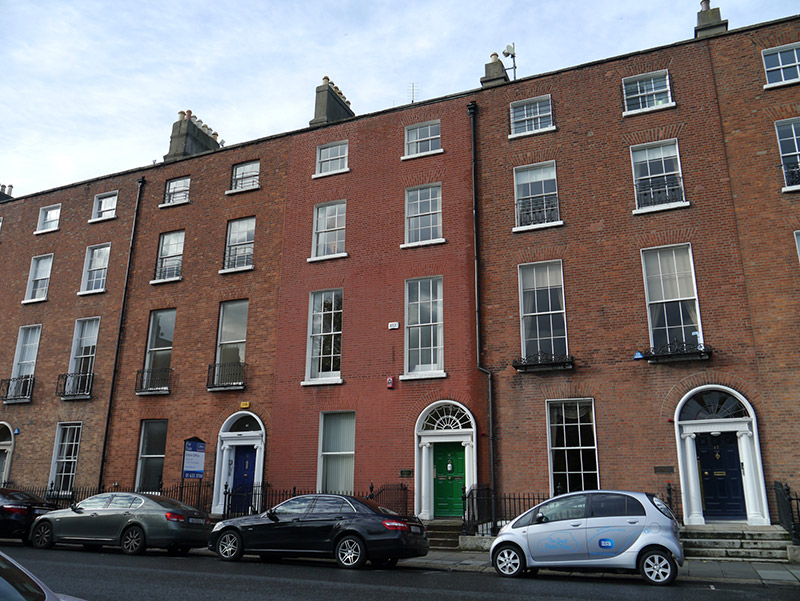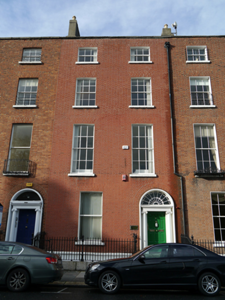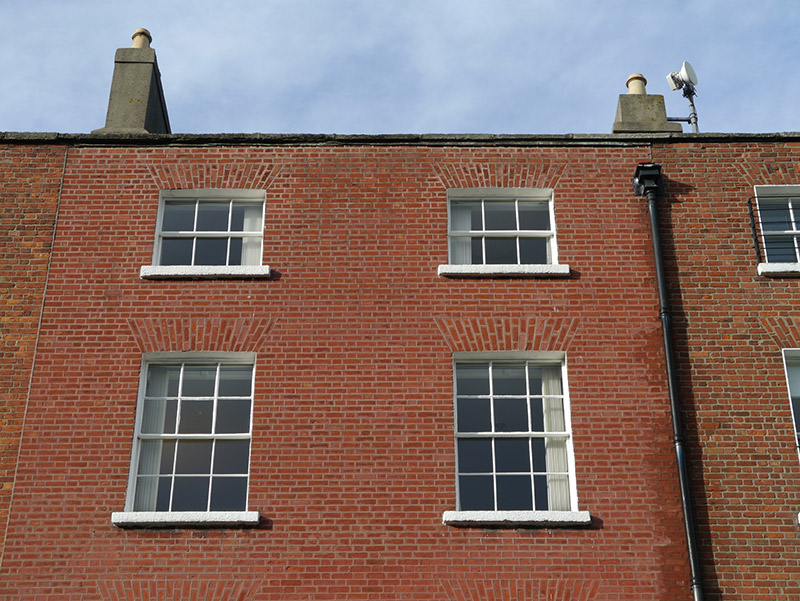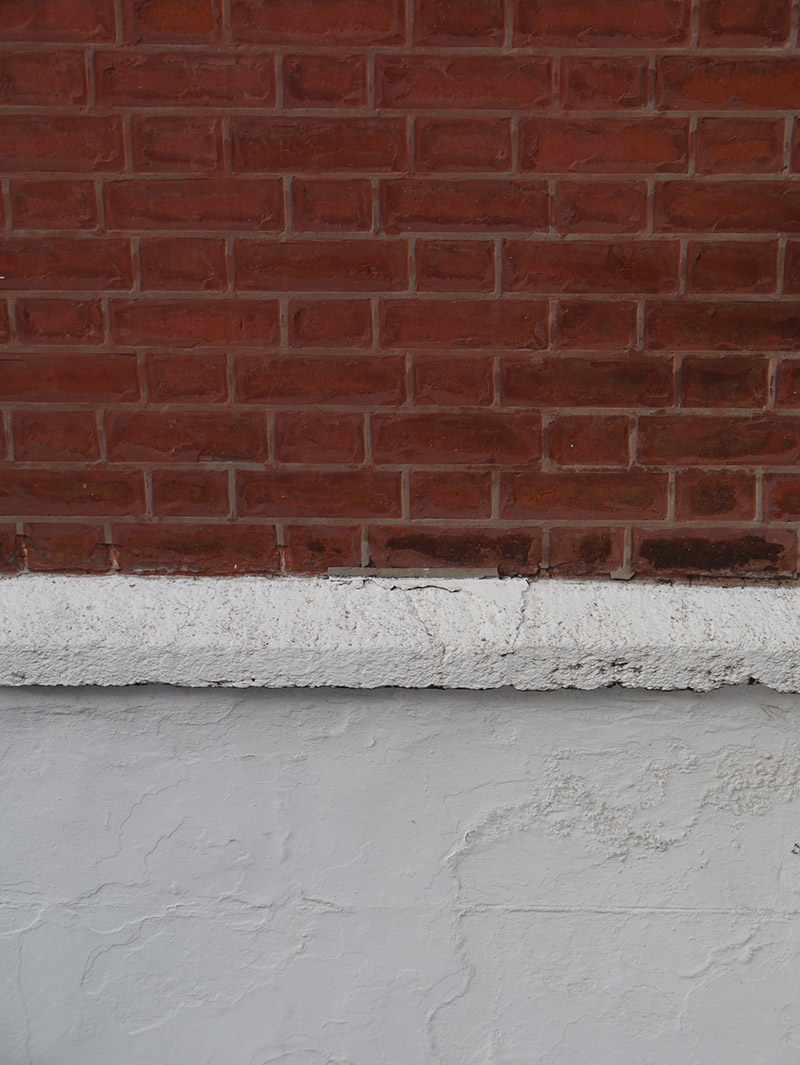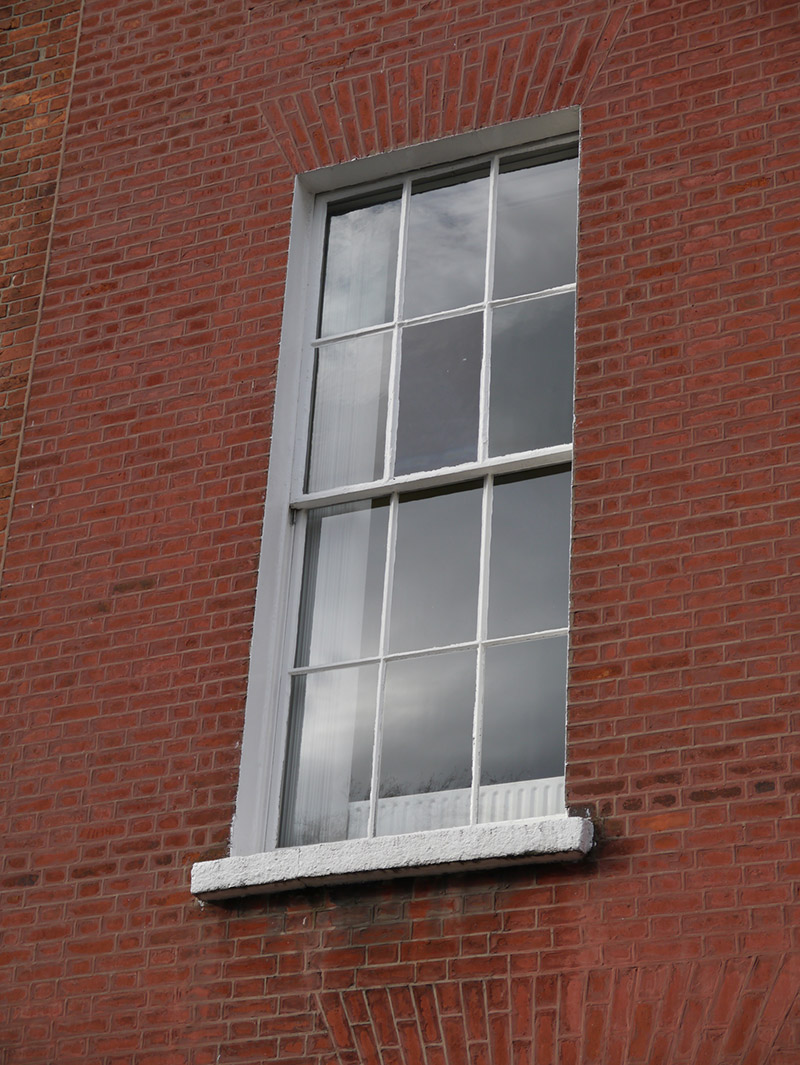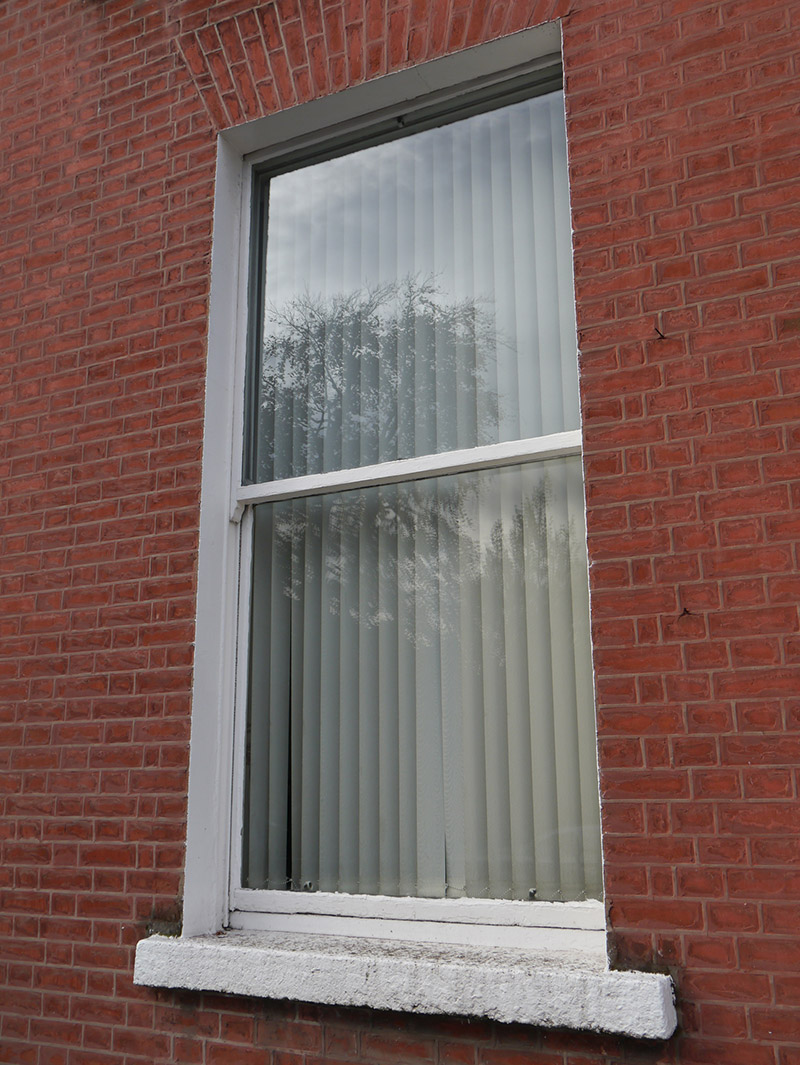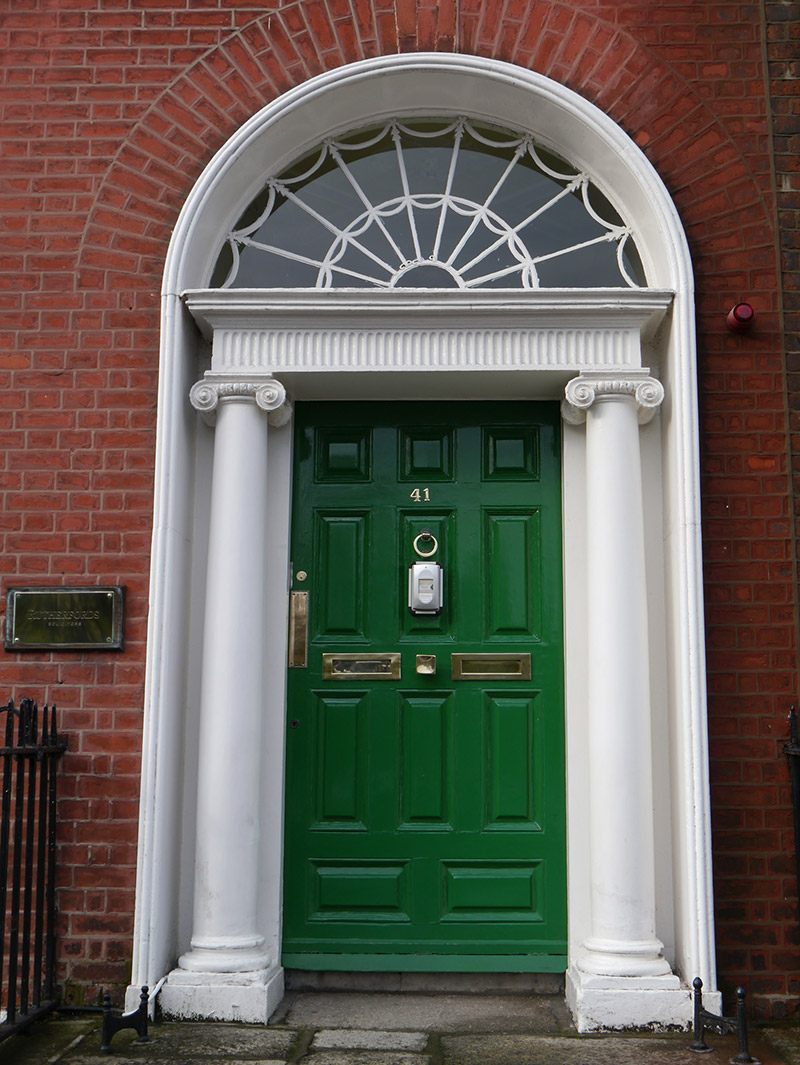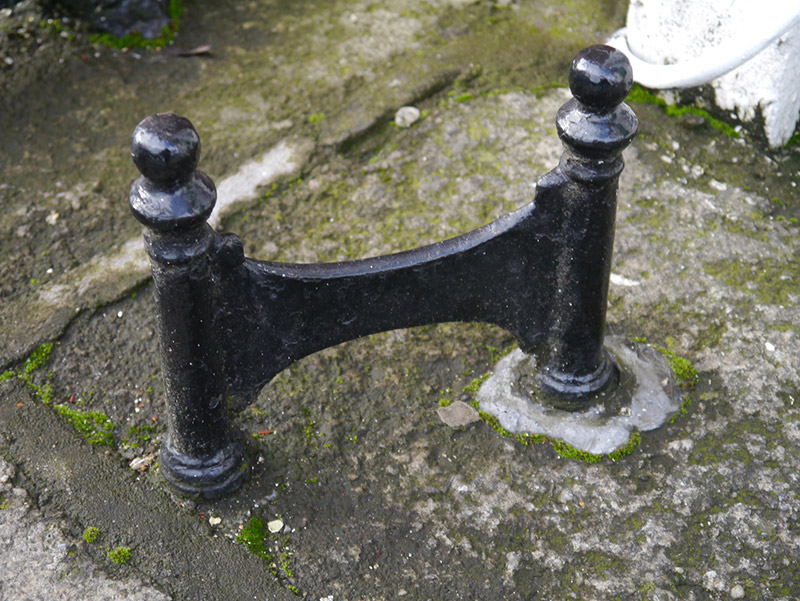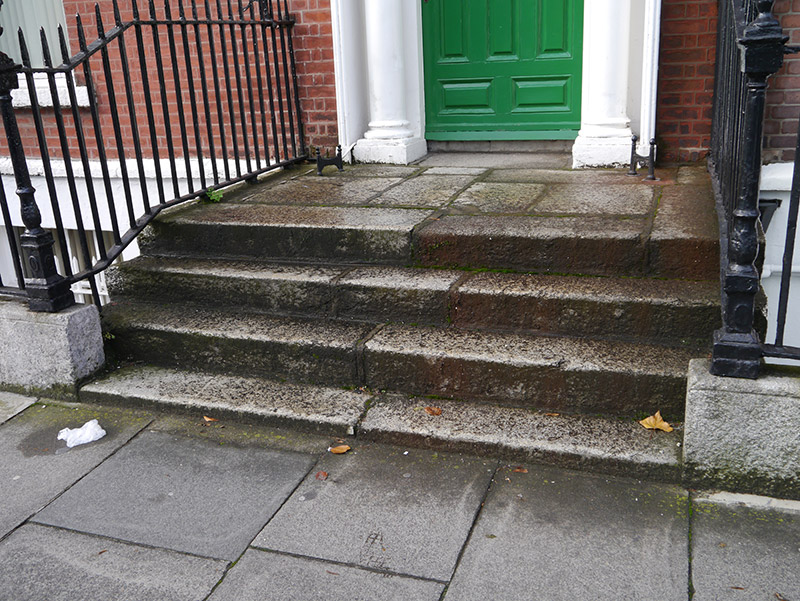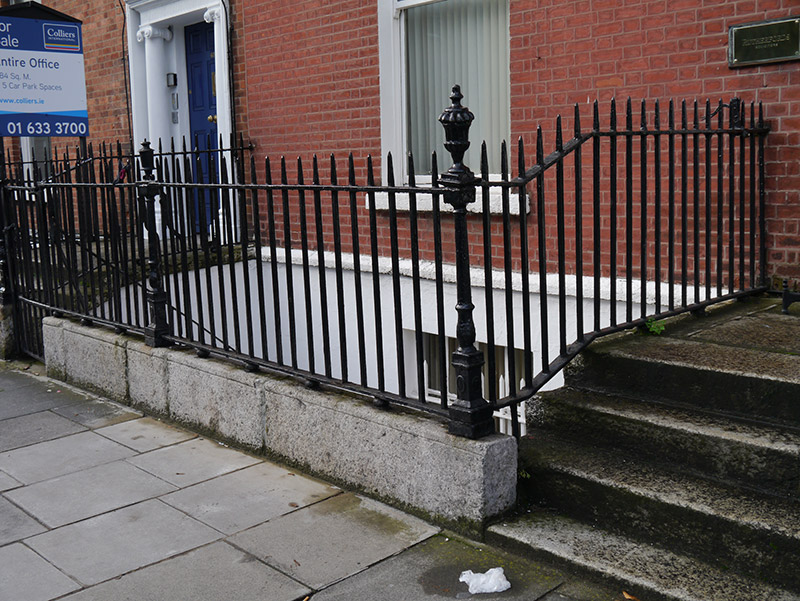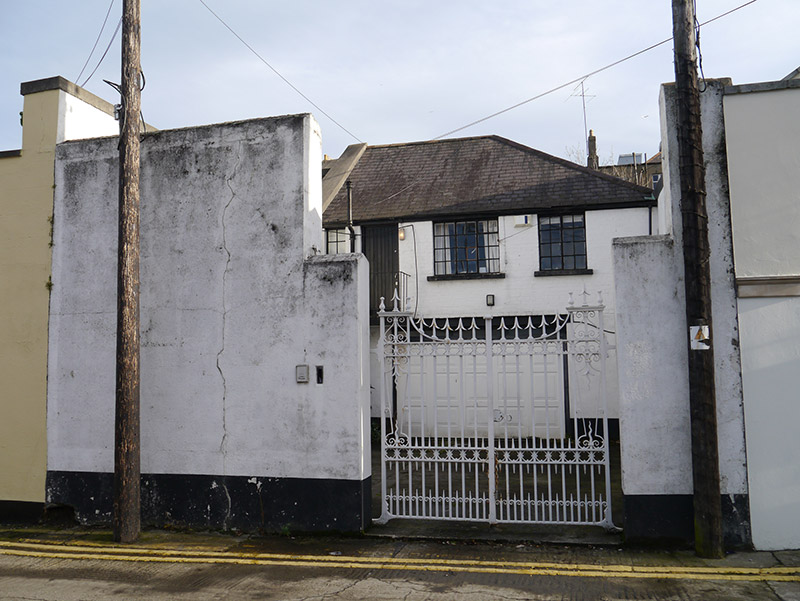Survey Data
Reg No
50930274
Rating
Regional
Categories of Special Interest
Architectural, Artistic
Original Use
House
In Use As
Office
Date
1805 - 1815
Coordinates
316395, 233108
Date Recorded
11/11/2015
Date Updated
--/--/--
Description
Terraced two-bay four-storey over basement former townhouse, built c. 1810, with two-storey return to rear (west). Now in use as offices. Pitched slate roof to east with irregular M-profile hipped slate roof to rear (west), concealed by brick parapet with granite coping. Shouldered rendered chimneystacks to party walls with lipped yellow clay pots. Parapet gutters with replacement hopper and downpipe to north end. Red brick walling laid in Flemish bond over rendered walling to basement beneath granite plinth course. Brown brick walling to rear (west) elevation. Square-headed window openings with brick voussoirs, rendered reveals and masonry sills. Largely six-over-six timber sliding sash windows (possibly original), three-over-three to third floor, eight-over-eight to basement and one-over-one replacement to ground floor with profiled horns. Round-headed door opening with brick voussoirs, moulded reveals and recessed doorcase comprising fluted frieze and moulded cornice carried on Ionic columns over plinth stops, decorative fanlight and raised-and-field timber panelled door with brass furniture. Granite entrance platform with cast-iron boot scrapers, approached by four granite steps flanked by iron railings with decorative cast-iron corner posts over granite plinth, enclosing basement to south-side. Coal-hole cover to pavement. Modernised two-storey mews building to rear plot with pitched slate roof (hipped to south-end), brick walls laid to English garden wall bond, multi-paned timber casement windows (nineteenth-century) and square-headed integral carriage-arch with recent panelled door. Rendered boundary wall to west on Laverty Court, with matching piers supporting decorative cast-iron vehicular gates.
Appraisal
This former townhouse forms part of a relatively intact imposing early-nineteenth century streetscape. It was the home of Denis Coffey, first President of UCD. Almost all of the western side was completed between c. 1807-15. Laid out in 1791 by the surveyors J & P Roe, Fitzwilliam Square was the last of the city’s Georgian squares to be completed. Development was staggered, progressing slowly due to the French wars. Although largely homogenous in character and form, the subtle variations between terraces are indicative of the speculative nature of the square’s development.
